#The Railroading Of Richard Ramírez
Text
The Wrong Gun
The Raildoading of Richard Ramirez
There’s something about the Night Stalker: the Hunt for a Killer documentary that isn’t right. Well, there’s a lot of things about it that aren’t right, like the inclusion of crimes Richard was never charged with, much less convicted of, for example child abductions and the murder of Patty Higgins.
Then there are the contradictions, such as the claim the killer loved to look the victim in the eyes, yet also gouged them out if they dared to look at him, or he screamed at them to look away as he raped them.
Documentary makers, the media and even detectives Salerno and Carrillo don’t care about truth; they care about sensation. But to lie, there needs to be an element of truth to make it believable and that means, if you’re going to accuse someone of using a certain firearm, you need to show viewers the correct firearm, even if you cannot find the original. That is where a major failure in the documentary occurs and is also linked to the actual trial: the .22 calibre Jennings pistol.
In episode 3, Frank Salerno tells us how a witness, fuelled by his conscience, informs the police that ‘Rick’ had told him he killed a couple in Monterey Park with a .22 automatic pistol – up flashes a smiling image of the victims William and Lillie Doi – and that this witness had obtained the firearm from ‘Rick’ and taken it into Tijuana, Mexico and given it to someone else. At this point, a dramatic noise plays and up pops the exhibit – a .22 Jennings pistol – only, that is not a .22 Jennings pistol.

A Jennings pistol (now called a Jimenez pistol) is semi-automatic. The photo above, shown in this part of the documentary, is a double-action revolver, more specifically, if you look at the logo and the serial number on the barrel, a Colt Police Positive. Below is a .22 Jennings/Jimenez pistol. They are tiny.
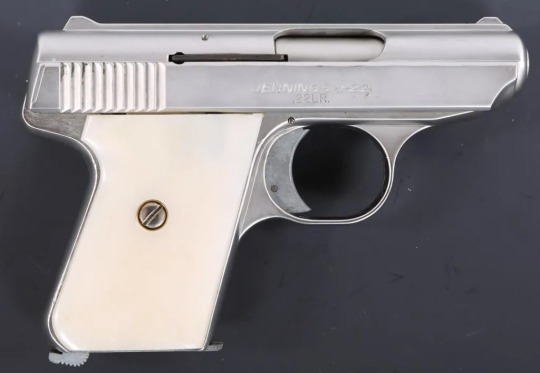
As you can see, these are totally different weapons. The Colt revolver has a cylinder, whereas the Jennings uses a magazine clip in the handle.
This begs two questions: Richard was mentally ill, but would he really flippantly confess to a man that he murdered two people with the very gun he was flogging him? Why would the witness even take a weapon that had been used in a murder at a time when the attacks were gaining news coverage? A normal person would not touch this weapon for fear of being implicated. A normal person would immediately go to the police.
Who was this witness?
Jesse Perez was a man in his 60s who had previously been imprisoned for manslaughter following a bar fight in the 1940s and also for burglary. Perez was an unlicenced taxi driver who would transport Mexicans back and forth over the border and as with so many people who were never properly questioned in this case, he was connected to the fence, Felipe Solano. At trial, Jesse testified that Richard had been introduced to him by his eldest brother Julian Ramirez and that he often saw Richard at the Greyhound Bus Station. He stated that he had given Richard a ride to Tijuana and also taxied him around Los Angeles, on one occasion to meet Felipe Solano at a barbershop and another time to Solano’s home. Jesse alleged that Richard paid for these lifts by buying him lunch.
Jesse Perez claimed that Richard, whom he only knew as ‘Rick Moreno’ or Greñas (a nickname regarding his uncombed, messy hair) had told him he liked to burgle yellow houses for jewellery because “Orientals live in yellow houses and don’t retaliate”. This testimony is a slightly different confession from the one Detective Salerno gives, which involves an admission of a double murder – incorrect anyway, for Lillie Doi survived. Seeing as Jesse Perez never stated in court that Richard confessed to murder, Salerno is possibly embellishing the story now that neither party is alive to dispute him. Besides, if you go on Google Maps and drop the little Street View man on any part of LA County, you will find that most people live in yellow or cream houses, not just Asians.
Anyway, the gun
Jesse Perez said he obtained the gun, then gave it to his girlfriend, Esperanza Contreras Gonzales in Tijuana. How romantic, to hand your special person a gun that is potentially a high-profile murder weapon.Jesse was granted immunity which is very odd, given that he had handled a ‘murder weapon’, allegedly knew details about a murder that Detective Salerno said was not known to the public and is a convicted burglar and killer. Surely this should have made him a suspect?Esperanza said the Jennings did not contain ammunition, but five bullets were found in the magazine when it arrived at customs… or were they in the revolver cylinder – because that gun on the documentary was not a Jennings! Esperanza was also given immunity at the1986 Preliminary Hearing.
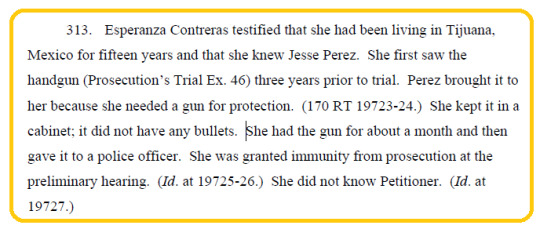
If ‘Rick’ was still in possession of this guna month beforeEsperanza received it from Jesse, as stated there in the petition, then why did he not use it to kill Lela and Maxon Kneiding and Chainarong Khovananth on 20thJuly? As was discussed inthis post, Richard was accused of usingtwo completely different gunson the same night for those murders.
There is more. The documentary claims a stereo was found during this Tijuana excursion and was the very one stolen from the Bell and Lang murder scene, thus tying the perpetrator to the Doi attack. But seeing as Jesse Perez was connected to the fence Felipe Solano, how do we know that he wasn’t stealing, selling and exchanging goods with him? Surely this also makes Jesse Perez a suspect? We will never know, for all three were given immunity and they cannot be investigated as they’re all deceased. As always, Richard’s defence team failed to challenge these aspects.

The above is unclear: does this mean Perez retrieved the weapon from a different friend in Tijuana or does ‘friend’ refer to his girlfriend Esperanza? If only the defence had asked.

What we have here is one criminal admitting to asking another criminal for a gun in early 1985, denying it and somehow still not becoming a suspect himself.
The revolver versus semi-automatic conundrum becomes more confusing when witnesses took the stand: they were all seeing something different.
Victim Sophie Dickman identified the Jennings, but she was not a reliable witness – she told officers on two occasions that her attacker was 5’8” before changing him to Richard’s height. Furthermore, the gun is reported to have been lost by the time of trial and the documentary shows the wrong gun, so what gun was Sophie actually looking at?

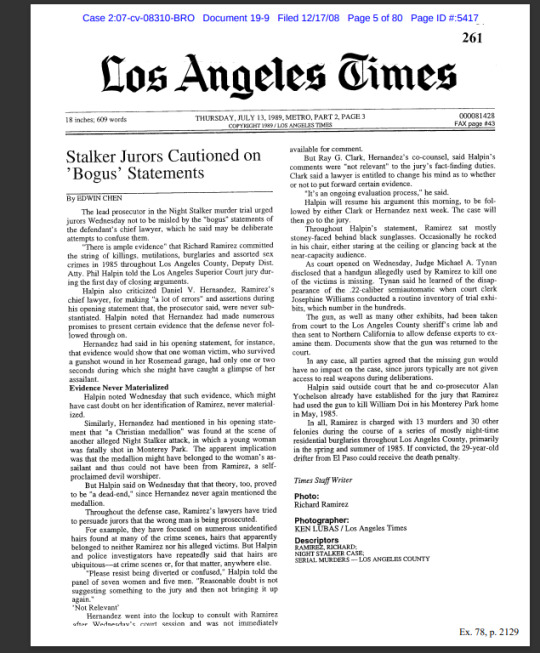
An associate of Richard’s, Earl Gregg asserted that Richard had attempted to sell him a black Jennings revolver… revolver?

The Jennings company (subsequently Bryco, then Jimenez) has never produced revolvers. This ‘black revolver’ does not match the silver Jennings gun that Sophie Dickman identified either.
So, what is the ‘evidence’ that Richard ever possessed this Jennings pistol? All we have is the following:
The testimony of a manslaughter and burglary convict, and friend of the infamous Solano.
A gun that did NOT have Richard’s fingerprints on.
Witnesses who cannot tell what gun they saw.
A missing Jennings gun at trial that apparently did not matter.
A Colt revolver shown on the documentary passed off as the Jennings.
When it comes to the bullet found in the Doi house, it was distorted and should have been challenged, but the defence failed.
Richard should not have been convicted of the Doi murder on the basis of this weapon. The more one looks, the more it appears that he was framed.But why? Why would Jesse Perez have pointed the finger at Richard? Perhaps he was one of the ‘Night Stalker’ attackers himself? Perhaps there was a financial motive? Actually, there’s no ‘perhaps’ about the financial motive – he was awarded ten thousand dollars. See LA Times, 25th October 1989, (Document 19-9, page 15) and also Breeze Newspaper (same date, Document 19-10, page 106).
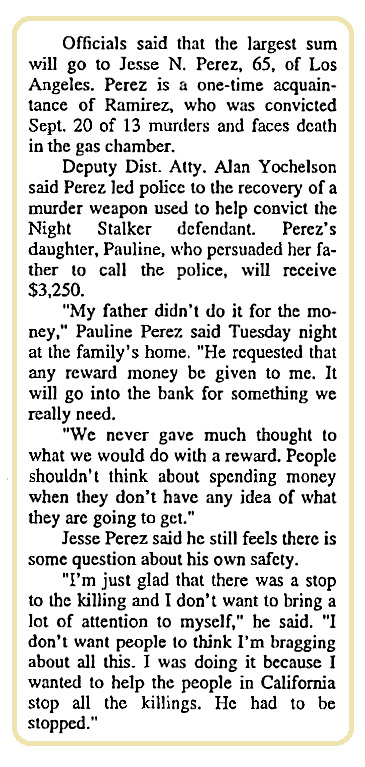

Also in the same article, it states that Earl Gregg, Richard’s associate named above and his wife Deleen, also received $2,500 and that Gregg’s sister Laurie Ochoa also received the same sum, just for recognising Richard from that really bad composite sketch. She stated that they were looking forward to a nice Christmas.

It must have been like winning the lottery for these people, a bunch of (now deceased) drug addicts and handlers of stolen goods; meanwhile, Richard Ramirez was sentenced to death, when there was no concrete proof he ever had that Jennings pistol. The wrong gun? Well, it might also have been the wrong man.
-VenningB-
Read full article Here
#the night stalker#night stalker#richard ramirez#ricardo ramirez#railroad#night stalker the hunt for a serial killer#22 Jennings pistol#Night Stalker: the Hunt for a Killer#netflix#Frank Salerno#Colt revolver#gil carrillo#The Railroading Of Richard Ramírez#serial killer#mass murder#tcc#true crim#true crime community#ted bundy#ed gain#jeffrey dahmer#jack the ripper
27 notes
·
View notes
Text

San Francisco Examiner, September 21, 1993
credit : Expendable For A Cause. – The Railroading Of Richard Ramírez
27 notes
·
View notes
Text
I don't want to believe about Richard's innocence but this blog made me think twice.
#richardramirez
Expendable For A Cause. – The Railroading Of Richard Ramírez
33 notes
·
View notes
Text
15 Devilish Facts About Richard Ramirez

One of the most notorious serial killers in history went on a crime spree that was as brutal as they come.
In this post, you'll discover the ultimate list of facts about Richard Ramirez, one of the most infamous serial killers in history.
Interesting facts about Richard Ramirez
1. He was born in El Paso, Texas
Richard Ramirez was born as "Ricardo Leyva Muñoz Ramírez" on February 29, 1960, in El Paso, Texas. The youngest of 5 children, he was referred to as "Richie" as a child.
Not many people would have guessed that he would become such a monster in his early days, because he was actually a nice child who was loved by his siblings, especially his older sister.
2. He had a very abusive father
This doesn't mean that everything was rosy in the childhood and adolescent years of Richard Ramirez. As with most serial killers, he suffered from some traumas early on in his life, mainly because of his abusive father.
His father Julian was born in Mexico and used to be a police officer in Juarez, one of the most dangerous cities in the country. Combine this with the fact that he was working in a dead-end job at the Santa Fe railroad and an extremely short temper, this often resulted in physical abuse in the house.
Richard Ramirez as an adolescent. / Source
3. He murdered 14 people and committed numerous other crimes
Ramirez started his crime spree at the age of 24, and it would last from April 10, 1984, until August 24, 1985.
Read the full article
#FactsaboutRichardRamirez#Notoriousserialkillers#People#RichardRamirez#RichardRamirezfacts#SerialKillers
1 note
·
View note
Text
The Murder of Dayle Okazaki
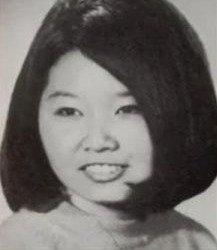
Here is a cold case for the LAPD: the unsolved murder of 34-year-old traffic manager Dayle Okazaki.
Yes, unsolved.
This is the story the public is familiar with: on 17th March 1985, Richard Ramirez entered the home of Dayle Okazaki and her housemate Maria Hernandez (early 20s), shot at Hernandez, and killed Okazaki with a bullet to the head. He departed without taking anything but left his hat behind, and for reasons unknown, spared Hernandez when he realised that she had survived. He left in a hurry to murder Tsai-Lian Yu, nearly four miles away.
Or maybe he didn’t.
Let us examine it in depth; first, Maria Hernandez’s testimony.
It was 11:30pm and Maria returned home via the garage, for which an automatic light came on upon entry. Once inside, she pressed a button to close the garage door and as she crossed the floor towards the internal door to the house, she heard an “undistinguishable” noise; later attributed (by Detective Gil Carrillo) to the sound of her attacker slamming his hand on one of the cars to attract her attention.
20 feet away stood a man, who pointed a “blue steel” gun at her face (held with both hands at his shoulder height) and approached coming within 6 feet of her. Maria focused on the gun – as one naturally would. She slowly crouched, pleading for her life and as he fired, she reflexively raised her hand to shield her face, as the automatic light went out. The bullet ricocheted off her keys and the force of the shot sent her falling to the floor. The attacker walked past her into the house, pushing her body aside with the door as he did so.
Maria escaped through the garage and fell over, at which point she heard another gunshot. Still bleeding from her hand she ran down an alley next to the property and out onto the street, where she saw the attacker leaving via the front door. He spotted her and aimed the gun at her. She pleaded for him not to shoot her again; he obeyed, lowered the gun and walked off into the night. Maria re-entered the property to find Dayle lying face down. She called 911.
Below are Google Earth images of their condo, this is the front, where Maria saw the attacker exiting. She was walking west (towards the right of this image) and he was walking east. Note that you cannot see any street lights.

Below is the rear of the property and the lane/alley that runs alongside (where the white cars and tree are).
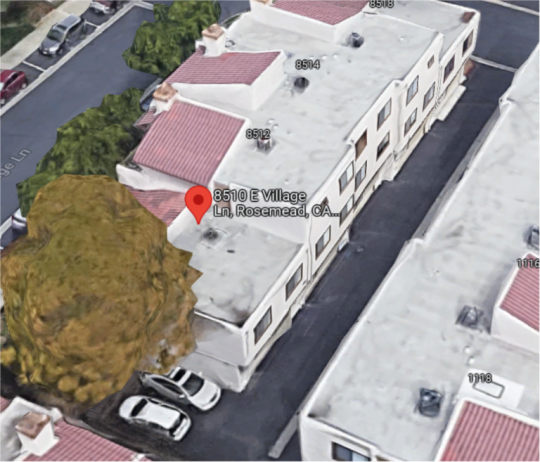
The suspect, from witness memory:
Deputy Sheriff Powell arrived. The report in the petition says at 10:54pm, but this is possibly a typing error – Maria claimed to come home at 11:30, so 11:54 would make more sense. A mysterious and unnamed witness told Powell that the suspect was a white male. Who is this witness and how were they able to see the suspect? If we don’t know their name, does it mean they did not testify in court or any hearings or attend any line-ups? Detective Gil Carrillo arrived at 12:20am and noted that the garage light remained on for just 8 seconds. He found a dark blue AC/DC hat at the scene.
At the hospital, Maria told Detective Carrillo – who knew Maria’s mother – that the attacker was either a light-skinned Caucasian or Mexican male and he had a “very determined look on his face.” She said he was between 5’9” and 6’1. This seems an odd range. 5’9” is average, but 6’1” is considered tall and two people of these heights would look noticeably different, so it would be reasonable to say that she did not know how tall the assailant was, just that he was not short.
Maria stated that her assailant was wearing a black “Members Only” jacket and a white shirt, but that she cannot remember whether the attacker was wearing a hat or not, but if he was, it was dark.

Maria did not remember the hat independently, which suggests she was being led by the investigator because Carrillo had found a hat. If she had seen the hat, would she not have remembered it having a lighter logo emblazoned across it? The location of the hat in the garage would not be consistent with the position he stood in when he shot Maria – he had moved closer to her and the hat was found close to the garage door.
The Petition states that Maria said she found Dayle face down, but Dayle’s injuries indicate that she was shot in the face at close range and had a blunt force injury to the back of her head. Could this indicate that she fell backwards? An alternative is that Dayle was hit on the back of the head before she was shot – there was a vase on the floor near her body. A dining chair was tipped over. There were small drops and pools of blood around the house that had come from Maria’s hand.
Identification processes:
Maria attended two line-ups in April and July 1985 and she was unable to identify any of the men as the murderer. Detective Carrillo showed her two photo spreads, each with six images of suspects, none of which was Richard Ramirez (who had not been arrested at this point). Maria chose one suspect from each of the spreads. In the 2021 documentary, Night Stalker: The Hunt for a Serial Killer, viewers were finally allowed to see who one of these suspects was: Arturo Robles. Here he is below.
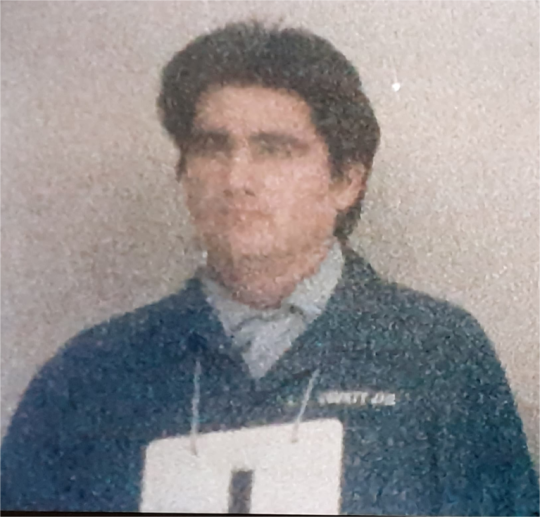
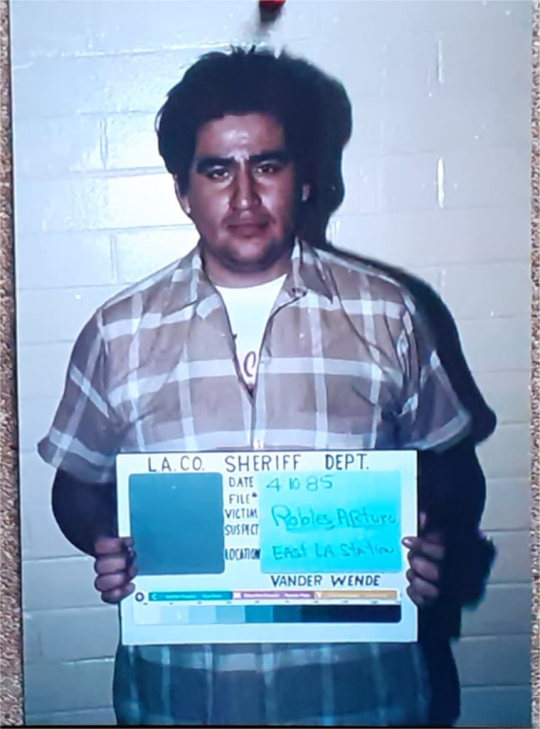
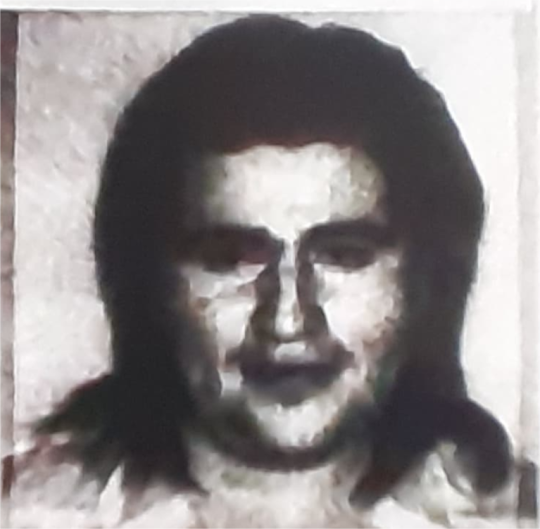
Arturo Robles was accused of stalking women, and his house was raided to discover swathes of pornographic images of women, as well as torn women’s underwear and other strange paraphernalia that he made various excuses for. He did however, own a jacket similar to the one Maria saw the killer wearing. Nevertheless, Gil Carrillo decided for everybody that this was not the suspect. And according to this article, despite choosing him from photos, Maria decided the murderer was not Robles after seeing him in person.
Maria assisted a composite artist to create a drawing of the suspect. Below is the one that was shown on the Netflix documentary.
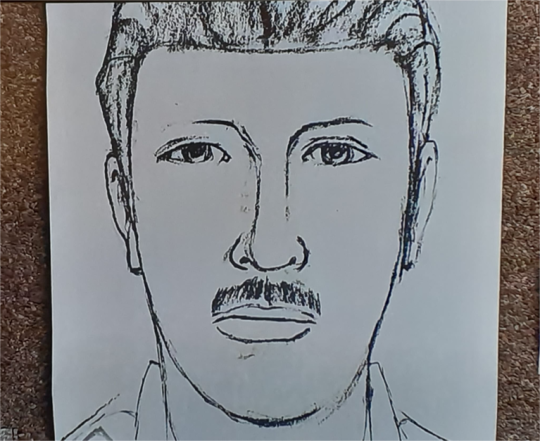
As you can see, it is nothing like Richard Ramirez and it is nothing like Arturo Robles either. Clearly, Maria did not have a clear image in her head of what the attacker wore, or what his face or hair was like.
“WANTED”
When Richard was named as the prime suspect, his face was shown on the news up to 5 times per day and was displayed on the front page of all the newspapers, complete with a description of him, each telling the lie that all the survivors had described the killer this way. Maria Hernandez saw these reports and papers, and then discussed the case with friends and family, including on the day before he was arrested. She did not associate him with her own attacker.
Maria attended a live line-up after Richard’s arrest. Richard was suspect Number Two and she wrote “2” on her card. However, an officer was photographed putting up two fingers to encourage witnesses to pick Suspect Two. This blatant leading of witnesses is so outrageous that it must be emphasised as much as possible. Here is that photo again.
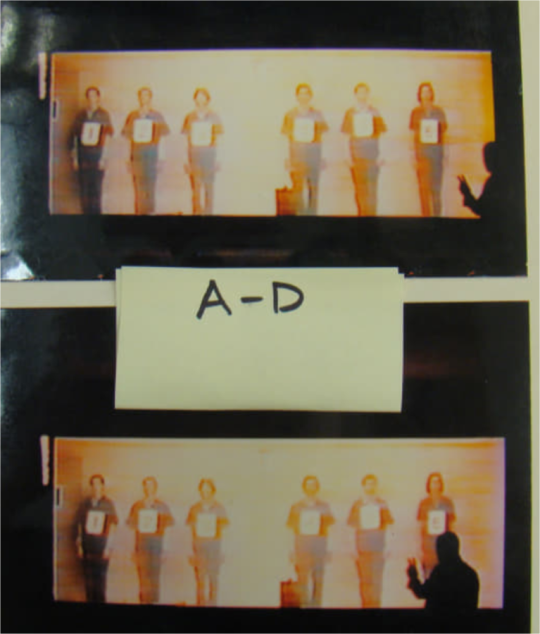
If Maria did not recognise Richard Ramirez after seeing his photograph on the news, and she told the composite artist to draw someone with a moustache, and picked photographs of men who looked nothing like Ramirez, then why did she start saying Ramirez was her attacker? Did the officer’s hand signal influence or intimidate her into choosing him? Did Carrillo encourage her to choose Ramirez outside of official proceedings? Remember, Carrillo knew her mother and they had recently reacquainted. She may have wanted to help her mother’s friend solve his high-profile case.
Hearings
At the preliminary hearing in May 1986, Maria again identified Ramirez but admitted she had seen him in the media and therefore may have been influenced. She admitted that Ramirez did not look like the composite sketch that she had helped to create. She now seemed unsure of herself. According to news report transcripts, Richard’s defence raised the evidence that the line-up was rigged with the officer signalling them to choose Richard, but this was dismissed because Maria had identified him.
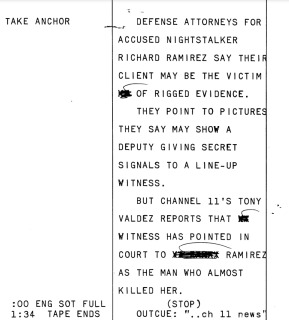
At the pre-trial hearing in April 1987, she identified Ramirez for the third time. However, at trial, Maria denied that she had said the composite sketch did not look like Ramirez’s ‘wanted poster’. Yet she admitted she relied on seeing his face in person at the court, because she could not identify him from memory.
Recap:
Maria’s attacker did not look like Richard; she only began saying it was him after speaking to Carrillo and attending the line-up in which a police officer was influencing witnesses.
She did not have the opportunity for a proper look at her attacker, because she was focused on the gun for a very brief moment before the light went out (less than 8 seconds) and she was shot at.
The second time she saw him, it was outside in the dark with no street lighting.
She could not even remember whether he was wearing a hat or not.
She could not determine his height or build or whether he had facial hair.
Un-defending the defensible
One would expect that Richard’s defence team would have a field day, cross-examining her on this, except that they were incompetent. They failed to challenge the fact that as soon as Richard’s face was known to her, Maria changed the description of the gunman. They failed to question how much the oversaturation of the ‘Night Stalker’ story in the media had upon her. They failed to suggest she may have been so focused on the weapon that she could not register the attacker’s physical appearance. They failed to discuss her state of mind – shock can distort perception and memory of traumatic events. Richard’s counsel even failed to establish that there were poor viewing conditions: the garage light went out and this happened at night, in a dark street. The Petition states,
“However, the defence failed to competently establish that Hernandez’s eyewitness testimony was unreliable. In closing argument trial counsel weakly observed: “Hernandez’s identification of Petitioner was of insufficient certainty to tie him to the crime.”
“Weakly” is right. They were not making the slightest effort to present this to the jury.
Physical ‘evidence’ at the scene
The evidence brought forward by the prosecution was a hat, found in the garage, by Carrillo. On the police report, it was described as dark blue with an AC/DC logo on the front.

At that angle, one might expect to see at least part of the lettering as it curved around the cap. However, this photograph does not prove this was an AC/DC hat. One would need to see other angles of the object with the lettering on display to be certain. There is an evidence photo of an AC/DC hat on a model head, but how do we know if that is the same hat from the garage? These questions are important because Richard Ramirez was implicated in this murder partly because he was a fan of AC/DC, and according to his criminal associates, he owned such a hat, so we need to be sure that the exhibit in the photo really was an AC/DC cap.
A competent defence would have had the hat examined to test whether the sweat belonged to Richard Ramirez. They did not. Also incompetent, the prosecution did not bother either, so if no one was willing to properly present evidence, the hat should have been disregarded. Could it have belonged to someone who had stayed in the victim’s house? Did the women have friends or boyfriends who were fans of AC/DC? Could it have been Dayle Okazaki’s hat? Sadly, she was no longer able to provide answers, but just because Maria Hernandez had not seen her wearing it, does not mean it was not hers.
Fingerprints that did not belong to Richard were found at the scene. During the 1986 hearings, news report transcripts state that Carrillo, while under cross-examination, “reluctantly conceded” that the prints were not his. It seems that he had his killer and he wanted to make the evidence fit his belief. The transcript said this “recants” the main evidence in this case, which means false information had been spread, finding Richard guilty before trial.
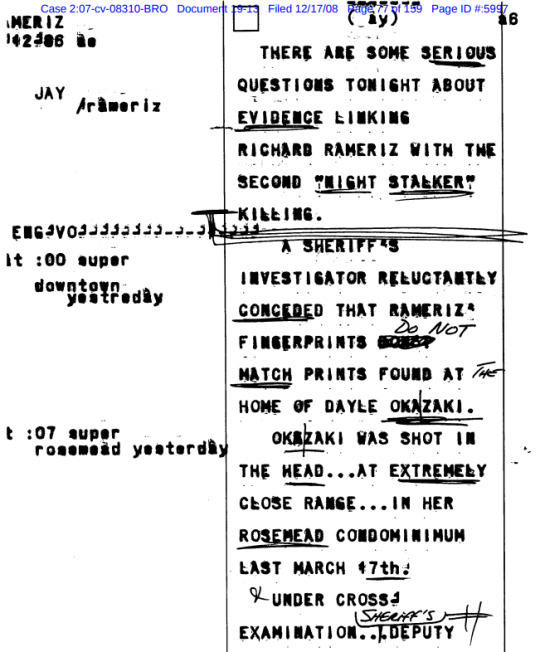
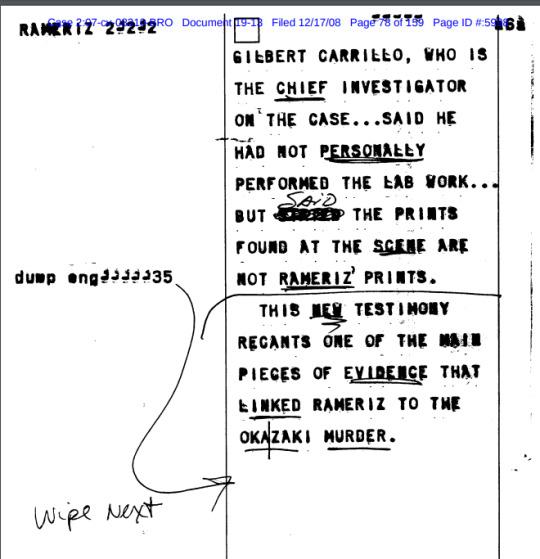
Note that in the second news transcript, it says “wipe next”. They were deliberately downplaying the fact evidence could not conclusively tie Richard to that crime scene. The media were entirely complicit in the railroading of Richard Ramirez.

In a desperate attempt to connect Dayle Okazaki’s murder to other crimes, and to establish some kind of modus operandi for these random and varied attacks, the prosecution argued that this was a burglary, despite nothing having been stolen. More accurately, they claimed this was a failed burglary; that Ramirez had intended to burgle but was disrupted. However, they neglected to establish the perpetrator’s intent or how he was disrupted; he obviously was not disrupted by Maria turning up in the garage – he was merely hiding in there, not in the act of stealing. He made no attempt to escape after being caught, and simply shot her and likely assumed she was dead. In that case, after shooting Dayle, he could have carried on burgling if that was his intention. But he did not; he left straight away and Maria did not say he was carrying anything but that same gun.
These are the questions that need answers: why did he allow Maria to survive when he realised that she was alive and could easily tell a neighbour or call the police? Does this mean he only wanted to kill Dayle and Maria did not matter as much? Did Dayle have any enemies or a stalker? This needed much further investigation as it sounds like a possible hitman. The victims have been severely let down by the police.
The prosecution brought forward ballistics evidence and Richard’s incompetent counsel did not bring their own counterevidence, and simply conceded that “you have to assume their evidence is correct.” That is appalling laziness.
There will be more thorough articles examining the flawed ballistics evidence on this blog at a later date, such as firearms expert Paul Dougherty’s opinion that the law enforcement work-up was inaccurate and inadequate because there were internal conflicts in the reports, regarding the condition of the bullets. Ballistics is important with this case in particular, for there was an attempt to link this murder to another on the same night, four miles away.
To return to the AC/DC hat: for argument’s sake, imagine for a moment that the defence had bothered to send it off for sweat testing. Imagine it had been proved beyond doubt that it had been worn by Richard Ramirez. In that case, the defence would still have had a card to play: Richard was seriously mentally ill. He had suffered a brain injury and was subjected to multiple traumas in his childhood which affected his thought processes. He also abused mind-altering substances. He had temporal lobe syndrome and been further damaged by untreated epilepsy. Had the courts given him a full psychiatric assessment, the defence would have easily been able to prove Richard was ‘insane’ under the McNaghten Rule and better yet, been able to stop the trial from going ahead at all, because he was not mentally competent; it was their job to save his life and defend him, no matter what. The issue of Richard’s mental competence is a vast and tragic subject, and it will be covered in future articles.
In conclusion, Maria Hernandez did not see her attacker properly, nobody produced adequate evidence to tie Richard Ramirez to the scene and the police failed to investigate Dayle Okazaki’s murder thoroughly. The primary evidence here is an untested baseball cap. The police failed, the defence failed and the prosecution failed. Nobody won; nobody had real closure.
-VenningB-
Full article
#Dayle Okazaki#frank salerno#netflix#night stalker#gil carrillo#railroad#ricardo ramirez#richard ramirez#the night stalker#night stalker: the hunt for a killer#night stalker the hunt for a serial killer#The Railroading Of Richard Ramírez#maria hernandez#tsai-lian yu
8 notes
·
View notes
Text
Ginny
“Injustice anywhere is a threat to justice everywhere. “
Martin Luther King Jr.
Ginny Petersen managed to convince a jury that Richard Ramirez attacked her and her husband in their home in Northridge on the 6th of August 1985. Just how did she do this? What does the evidence from that night tell us? Well, let’s go back to August 1985 and take a stroll down memory lane.
The Petersen’s lived in Northridge, a neighborhood in the San Fernando Valley region of Los Angeles. It is approximately a 35-minute drive from Skid Row in downtown Los Angeles. Northridge’s claim to fame: Not much other than it has been home to California State University since 1972 and was the site of a rather large earthquake in 1994.
Virginia Petersen stated that on the night of August 5, 1985, she went to bed around 9:00 p.m. and was awakened in the middle of the night because she heard footsteps in the hallway near her bedroom. She stated she saw a man enter her bedroom, and she yelled, “Who are you? What do you want? Get out of here!” She attempted to turn towards her husband, who was on the opposite side of the bed, and was shot on the left side of her face by her nose. Her husband was shot as well but managed to get out of bed, began chasing the attacker, and was shot again. She stated she got her daughter from her bedroom and called 911. By this point, her husband had gotten into their vehicle, then picked her and their daughter up, and they all went to the hospital.

18241 Acre Street, the Petersen'd home, in Northridge Los Angeles
In a statement given to police, Virginia Petersen described her attacker as “male, light-complected, athletically thin, and tall.” She said his hair was dark, curly, or wavy and combed back from his face. She further stated the suspect’s hands were long and thin, and he had clean, well-manicured fingers that were lighter than the rest of his appearance. She told law enforcement that her attacker’s hands were “more like an artist than a construction worker.” Ok. Hold up right there. Let’s think about this for a minute. Richard Ramirez, the big bad Nightstalker, had clean, well-manicured fingers? Hands that looked like an artist. Are we talking about the same Richard Ramirez? The one who was nearly homeless, with a drug addiction? A man who didn’t take care of himself. Are we supposed to believe that in between the rapes, murders, and burglaries, Richard took the time to visit his local nail salon and get himself a manicure? Ginny would repeat the story about the manicured hands looking like those of an artist in court, but she would change the description she gave of the suspect’s hair. Whereas on the night of the attack, she said the attacker’s hair was combed back from his face, in court, she would testify that her attacker had wild and “shaggy hair.” It just so happens that by the time the trial began in 1989, Richard’s hair had grown out quite a bit, and some might call it shaggy. However, that was not how his hair looked in August 1985.
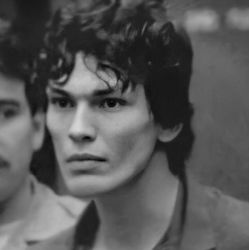
Richard, shorly afeter his arrest in 1985
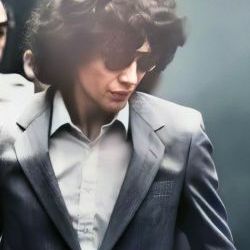
Richard during his trial in 1989
So why did Ginny change her description of the attacker’s hair at the trial? Our memories do not improve with time. Memories become faded, distorted, and less distinct. So, no, Ginny would not have had a better recollection of her attacker four years after the event. What influenced her description? Was it the countless images of Richard in the newspaper and on television? Was it the influence of the LAPD?
Virginia Petersen testified in court that she had seen Richard’s photograph in the newspaper and on television multiple times. She stated she first saw his photograph on television the night before he was arrested. But she did not contact the police. That’s correct. Ginny saw Richard, who allegedly shot her and her husband, on television, and she didn’t bother to call the police. By the way, Ginny’s husband, Christopher, argued with and chased the man who shot him and his wife but did not identify anyone, nor did he testify in court.
Excerpt from the Petersen police report.


The “evidence”
Law enforcement found prints from gardening gloves on a sliding glass door and a screen at the Petersen home. They also recovered casings from expended bullets and a slug in the bedroom. They determined the bullets were from a .25 caliber automatic gun, but they never found the weapon used. The bullets recovered contained red primer, and bullets at another crime scene, the Abowath scene, also had red primer on them. So, law enforcement decided the same person must have committed these crimes solely based on this red primer. When Richard was arrested on August 31, law enforcement searched a locker used by Richard at the Greyhound bus station and found bullets with red primer.
Conceding the ballistics evidence
What did Richard’s defense do with the information presented by the prosecution regarding the ballistics evidence? If you guessed absolutely nothing, you would be correct.

From 2008 federal Writ of Habeas Corpus petition
Arthuro and Daniel (the Hernandez’) struck again and failed to challenge any of the ballistic evidence used against Richard. They also failed to retain a firearms expert to examine and report on any of the ballistics evidence. Yet again, they neglected to do their most basic duty for their client, a young man whose life depended on disputing and challenging the so-called evidence.
A brief overview of ballistics
Forensic ballistics involves the examination of evidence from firearms that may have been used in a crime. When a bullet is fired from a gun, the gun leaves microscopic markings on the bullet and cartridge case. If investigators recover bullets from a crime scene, examiners can test-fire a suspect’s gun, then compare the marks on the crime scene bullet to marks on the test-fired bullet. The examiner can then assess how similar the two sets of marks are and determine if the bullets are likely to have been fired from the same gun or different guns. Cartridge cases are compared in the same way. No .25 caliber weapon was recovered from Richard or any of the so-called Nightstalker crime scenes, so no such testing was ever done. So how did law enforcement link Richard to the bullets at the Petersen crime scene? First, law enforcement decided bullets and casings from the Abowath crime and Petersen crime were the same based on the red primer found on bullets and casings recovered at both scenes. Then they discovered bullets with red primer in Richard’s locker at the bus station the day he was arrested. Hence, according to law enforcement logic, Richard had to be the perpetrator in both the Petersen and the Abowath crimes, despite never having recovered the weapon used in either crime.
Bullet lead analysis
From the 1960s to the early 2000s, the FBI crime laboratory used comparative lead bullet analysis to tie suspected criminals to crime scenes. In 2004, research conducted by the National Academy of Sciences showed the “science” behind lead bullet analysis relied upon for nearly 40 years was extremely flawed and had no scientific basis or support. As a result, in 2005, the FBI stopped using these tests and uncovering the flaws of this science led to the discovery of wrongful convictions.
The theory behind lead bullet analysis was that bullets coming from the same box of ammunition would be coming from the same factory and would be manufactured at the same time, under similar conditions, and with the same lead composition present; all the bullets in a box, therefore, would have the same chemical makeup. Bullets from different boxes would have different chemical makeup. The theory was that if a bullet from the crime scene had the same lead composition as a bullet from a box of bullets owned by a suspect, there was physical evidence linking the suspect to the crime scene.
What we know now
After a thorough review of the research, the National Academy of Sciences concluded there is no evidence to support the theory behind lead bullet analysis. Bullets from the same box may not necessarily have the same chemical makeup and markings, and bullets from different boxes and different factories may have the same chemical makeup and markings. This makes lead bullet analysis extremely unreliable, despite having been used for 40 years to convict many people. Richard’s case was one of those where flawed, inaccurate bullet lead analysis was used to link various crime scenes and to convict him.
Wrongful conviction
The Petersen crime is yet another case Richard was convicted of based on faulty, inaccurate, misleading evidence presented by the prosecution. The evidence from the Petersen crime does not demonstrate that Richard shot the Petersen’s. A person’s memories of an attacker are distorted by stress, fear, and images seen in the media and contaminated by what law enforcement leads victims to believe. Richard was not a chameleon that was able to change his appearance from one crime scene to the next, as some would have us believe. Gloves do not yield “fingerprints.” He was very unlikely the only individual in the greater Los Angeles area to have bullets with red primer. As we know, a box of ammunition can contain bullets with different chemical makeup and markings. There was a considerable amount of reasonable doubt in the evidence used to convict Richard of the Petersen crime that his attorneys failed to capitalize on. Richard was convicted and sentenced to death based on faulty, highly circumstantial evidence. This is wrong and a miscarriage of justice.

Full article
#ricardo ramirez#richard ramirez#night stalker the hunt for a serial killer#night stalker: the hunt for a killer#the night stalker#The Railroading Of Richard Ramírez#petersen's case#night stalker
5 notes
·
View notes